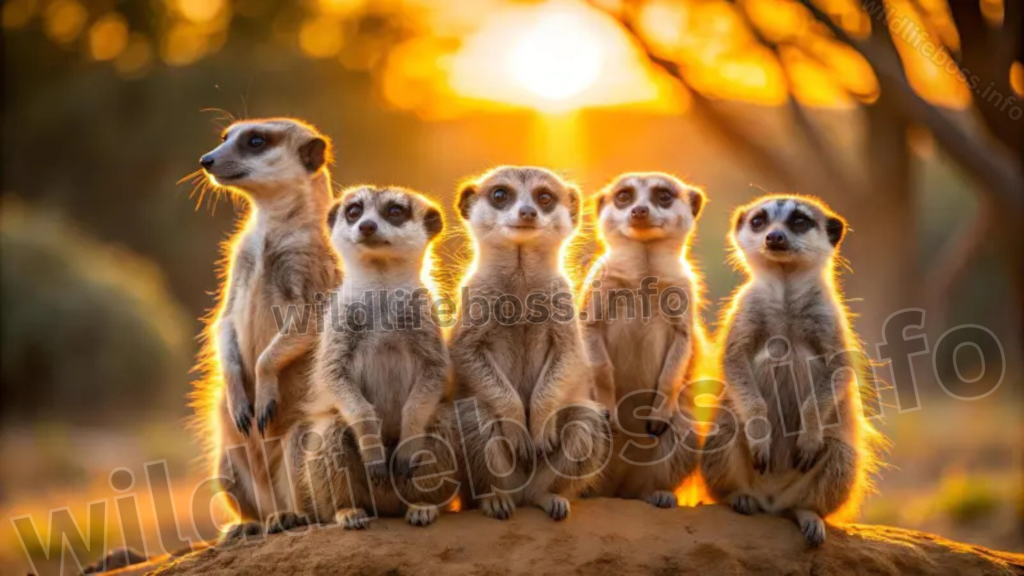Meerkats (Suricata suricatta), who are well-known for standing on their hind legs, frequently rank highest in surveys of “favorite animals.” Southern Africa is home to this species of small mongoose, It belongs to the family Herpestidae.
Meerkats are characterized by their bushy, brown-striped fur, short, pointed faces, and huge eyes. They weigh between 1.4 and 2.1 pounds and measure around 20 inches in length, including the tail. They excavate holes with their strong, sharp claws.
Meerkats are very sociable creatures that live in underground burrows in groups of 20 to 50 people. They are always on guard and will hide in their burrows if they feel attacked. They are active during the day.
In addition to eating insects, meerkats are omnivores that also consume small animals, birds, truffles, lizards, and eggs.
One member of the group will always be left on sentry duty. To alert the others, they will bark and whistle if they perceive danger.
The meerkat is the only animal in the genus Suricata, however several other species share the traits listed above. Some of these animals share similarities in appearance or behavior with meerkats, while others are linked to them.
These are a few creatures that resemble meerkats:
1. Yellow Mongoose
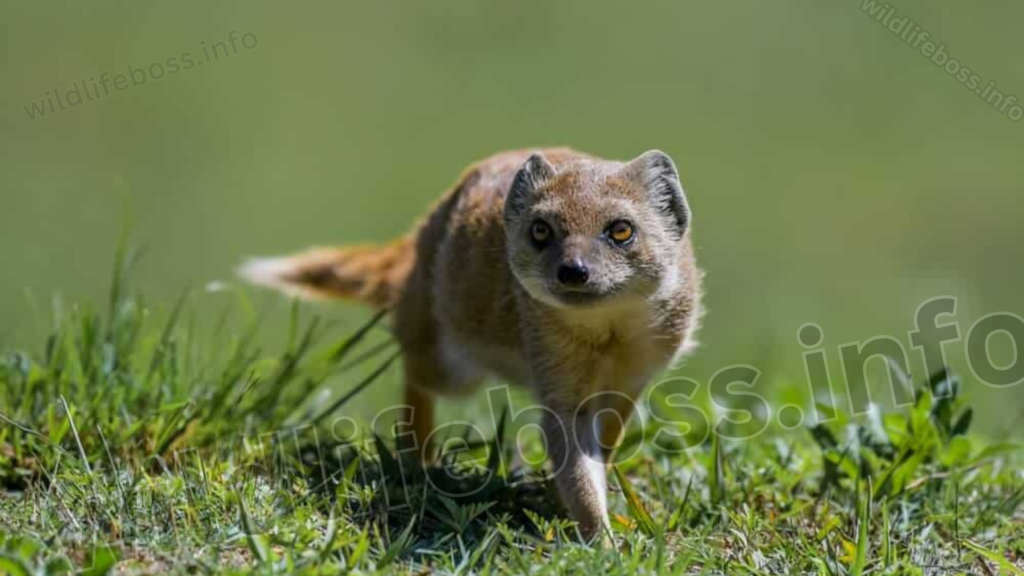
Scientific name: Cynictis penicillata
Quick summary: Meerkats and yellow mongooses are closely related and have many physical characteristics in common. They frequently share a home.
The physical characteristics of yellow mongooses and their meerkat relatives are very similar .Along with meerkats, they belong to the Herpestidae family.
Light-coated creatures with a bushy tail and a layer of yellow fur underneath their brown coat are known as yellow mongooses. They are frequently referred to as red meerkats because of how much their appearance resembles that of meerkats.
Mongooses can grow up to 20 inches in length and weigh around 1 pound. They spend the night in underground tunnels and use their strong, keen claws to dig through earth.
These little creatures frequently live in burrows alongside other creatures, such as meerkats. Mongooses will stand on their hind legs, scanning the area for any threats.
Like meerkats, yellow mongooses are sociable creatures that live in big groups. They also raise their offspring in a cooperative manner. Meerkats can withstand some scorpion venom and like hunting them. Mongooses can withstand a certain quantity of snake poison and prefer to pursue snakes.
2. Prairie Dog
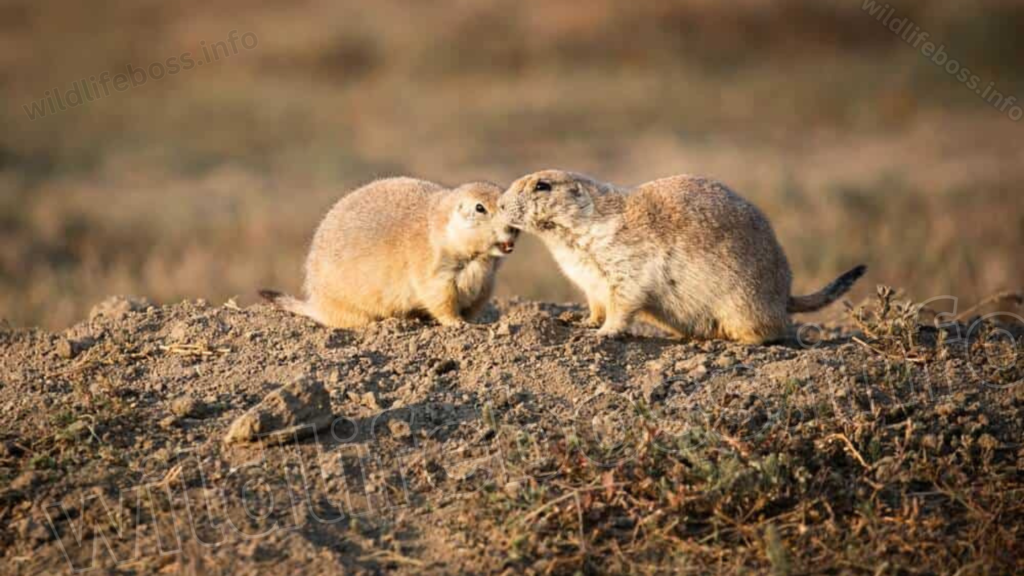
Scientific name: Cynomys
Quick summary: Meerkat-like social behavior in a member of the Sciuridae (squirrel) family.
Prairie dogs, which belong to the Sciuridae (squirrel) family, are tiny rodents that inhabit North American prairies. They eat a variety of foods, including as grass and insects, and are mostly active throughout the day.
The average prairie dog weighs one to three pounds and stands sixteen inches tall. They are short-legged, have small, round ears, and strong, long claws. They usually have short, coarse fur that is tan in hue and a lighter stomach.
They are among the friendliest animals in nature and live in big groups, just like meerkats. They are active during the day, coming out of their burrows to patrol and defend their areas.
Prairie dogs employ a variety of warning sounds to alert potential predators.
3. Banded Mongoose
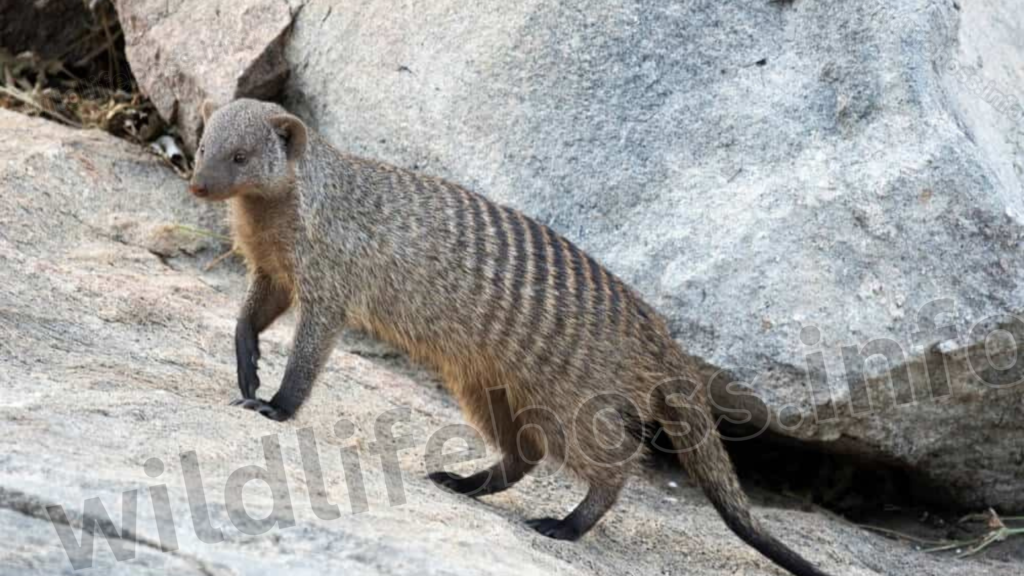
Scientific name: Mungos mungo
Quick summary: Similar to the relatives of meerkats, banded mongooses are excellent in killing snakes.
Dark bands run the length of the coarse, brownish-gray coat of a banded mongoose. They feature pointed snouts, short legs, and a towering torso. They enjoy burrowing, and their powerful, long, curved claws are ideal for scraping and excavating.
The vast grasslands of central and eastern Africa are home to these little creatures. Termites, scorpions, beetles, and millipedes are among the insects that banded mongooses consume. They can weigh up to 3-5.5 pounds and reach a maximum length of 18 inches.
It is well known that the banded mongoose can kill snakes. They frequently bite the tail of cobras and lunge at them until the snake is exhausted in an attempt to agitate them.
Mongooses are among the most social of all the animals, living in big tribes of up to 40 people and being nearly as large as meerkats.
4. Weasel

Scientific name: Mustela
Quick summary: Weasels use their hind legs to stand and scan their environment for potential threats.
Weasels are tiny, carnivorous mammals that inhabit a variety of habitats worldwide. They belong to the Mustelidae family. Short legs, rounded ears, long necks, and big eyes are all characteristics of weasels that resemble meerkats in dimensions.
Weasels range in size from 15 to 24 inches from nose to tail, though this is not always the case. Their fur is frequently brown, black, or gray, and they have markings that range from yellow to white. The further north they live, the more white weasels there are in the winter.
5. Marmot
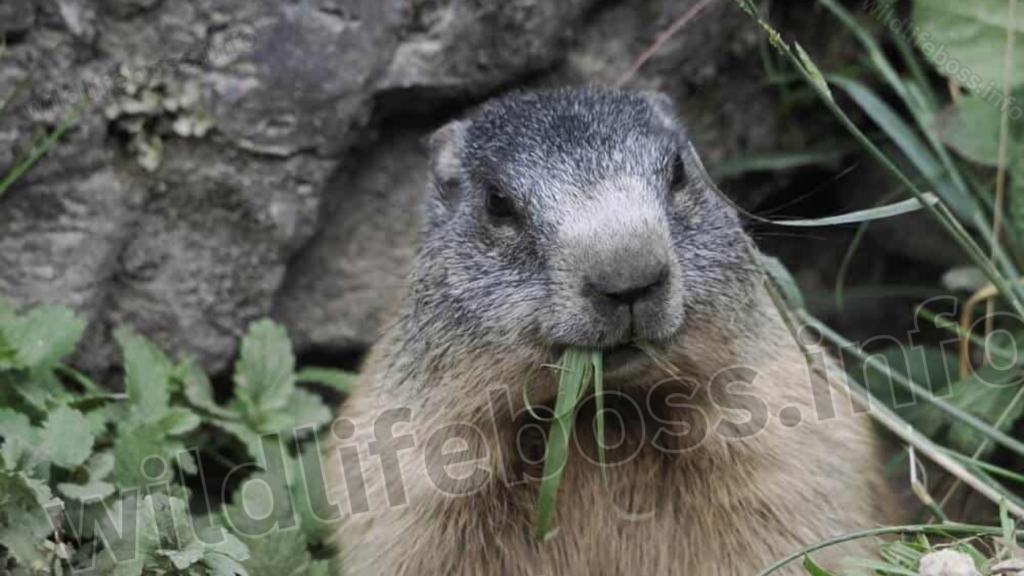
Scientific name: Marmota
Quick summary: A rodent with hair and a characteristic warning sound.
Marmots are cute hairy rodents that dwell in the mountains of Asia, North America, and Europe. Their claws are ideal for digging. They are the heaviest of the squirrel family and closely related to ground squirrels and prairie dogs.
Burrows dug by marmots can reach a length of thirty feet. During the summer, they live in groups and are gregarious, but they hibernate in their burrows during the winter.
Martomas search for predators by standing erect on their hind legs, just like meerkats do.
When they perceive danger, these creatures also emit warning sounds; marmots create a characteristic loud whistling sound, while meerkats bark. They are known as “whistle pigs” because of this noise.
Sea also: 10 Unique Animals That Look Like Beavers(with Photos)
6. Dwarf Mongoose

Scientific name: Helogale parvula
Quick summary: The behavior of this little mongoose is similar to that of its meerkat ancestors.
Africa’s tiniest carnivore, the dwarf mongoose, is frequently spotted foraging for sweet insects to consume. Measuring about 7 to 11 inches, they are the smallest of all the mongoose species and have pointy faces and short ears. Their fur might be speckled brown or reddish-buff in color.
These adorable creatures can live up to 18 years in captivity and 10–14 years in the wild. They are exceedingly gregarious and inquisitive, much like meerkats, and they dwell in big groups.
To monitor the area, the group’s alpha male typically perches atop a termite mound. If he perceives any threat, he will vocalize to alert the other members of the colony.
7. Raccoon

Scientific name: Procyon lotor
Quick summary: member of the Procyonidae family, which is related to meerkats in several physical characteristics.
Raccoons and meerkats look somewhat alike: they have circles around their eyes and pointed snouts. They are the largest of the Procyonidae family and measure between 16 to 28 inches for their body length generally.
Today most raccoons dwell in the forests, farm land and in cities of North America. These are carnivores but they also feed on insects, small mammals, as well as nuts, fruits and vegetables. Generally raccoons exist outdoors for two to five years, but can live up to 14 years if living in captivity.
It should however be noted that raccoons though are known to be nocturnal and shy are known to live in pack or small groups.
8. Rock Hyrax
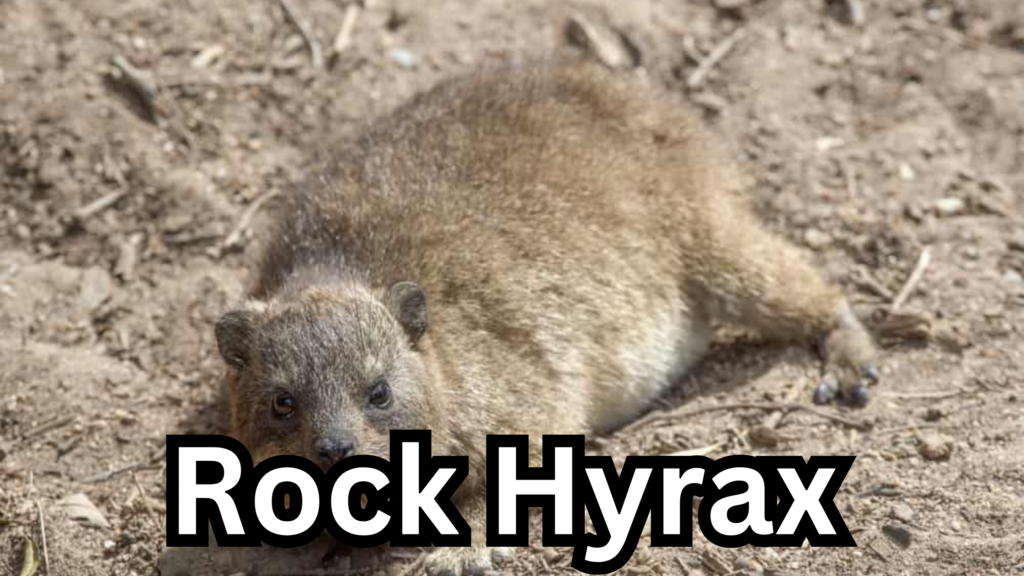
Scientific name: Procavia capensis
Quick summary: A tiny animal that inhabits vast colonies in the Middle East and Africa.
Native to the Middle East and Africa, rock hyraxes are brownish-gray mammals with short, robust legs and ears. The average adult rock hyrax weighs 4 to 12 pounds (2 to 5 kilograms) and can reach a maximum length of 22 inches (56 cm).
The Procaviidae family includes rock hyraxes. Despite their rodent-like appearance, they are actually more closely related to manatees or elephants.
Like meerkats, they often consume a wide range of plant species, including lobelia, but they also occasionally consume grubs and insects.
These gregarious creatures reside in sizable colonies of five to sixty people. While the colony forages for food, they will also maintain lookouts on duty. If the lookout notices a threat, he will sing.
9. South African Ground Squirrel
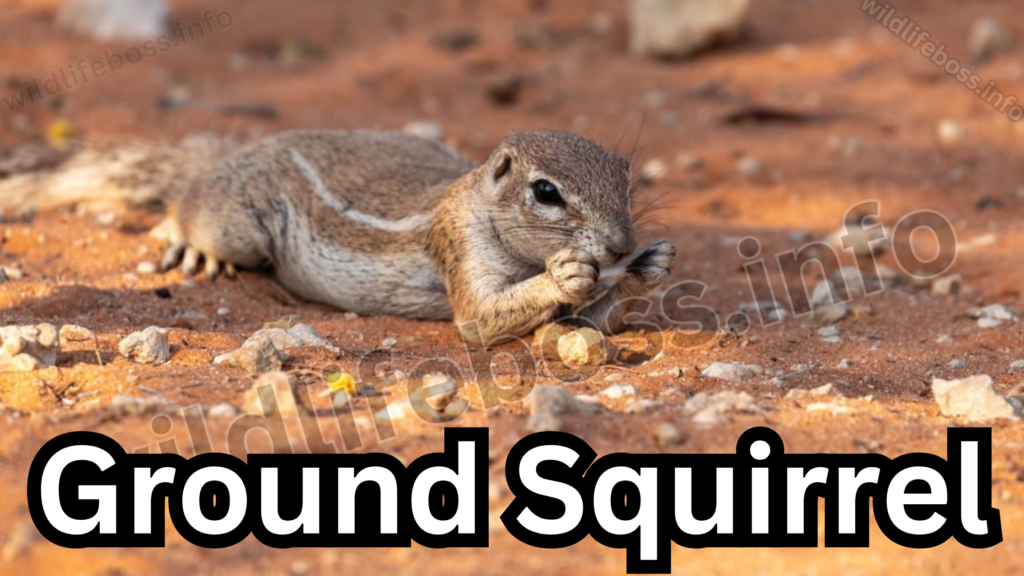
Scientific name: Geosciurus inauris
Quick summary: An cute squirrel that resembles a meerkat
The short round ears and similar appearance of the South African and Cape ground squirrels make them easy to mistake for meerkats. They range in size from 16.7 to 18.7 inches as well.
Ground squirrels favor the same terrain and live in large groups, just like meerkats. They will also sit up straight to look about and evaluate the danger. During the day, ground squirrels are energetic and enjoy digging. They occasionally coexist with meerkats.
With their cinnamon-colored fur and fluffy tails, these adorable little squirrels may stay cool in hot weather by using them as a parasol. They can thereby reduce their energy usage by up to 5%.
10. Chipmunk
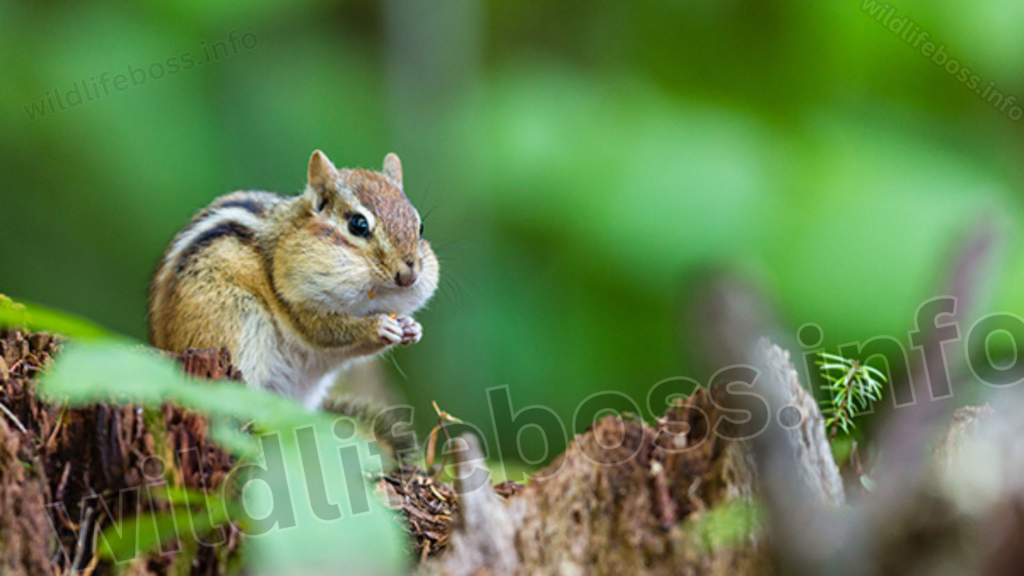
Scientific name: Tamias
Quick summary: This little rodent lives on the earth and enjoys digging burrows.
Because of their attractive appearance, chipmunks are very popular animals and a favorite among Hollywood animators. Chipmunks are found in most part of North America; however, there is the Siberian chipmunk, which is found in Asia.
Most of the chipmunk species are much smaller than meerkats, with sizes of 3.1 – 6.3 inches in body length. They are normally characterized with brown or grey stripes on the body hair. As with meerkats, they feed on fruits, seeds, nuts and insects as part of their diet.
Chipmunks excel at digging burrows, which are frequently longer than eleven feet. They are also highly talkative animals that, if they sense danger, will make noises to alert other members of their group.
11. Fossa
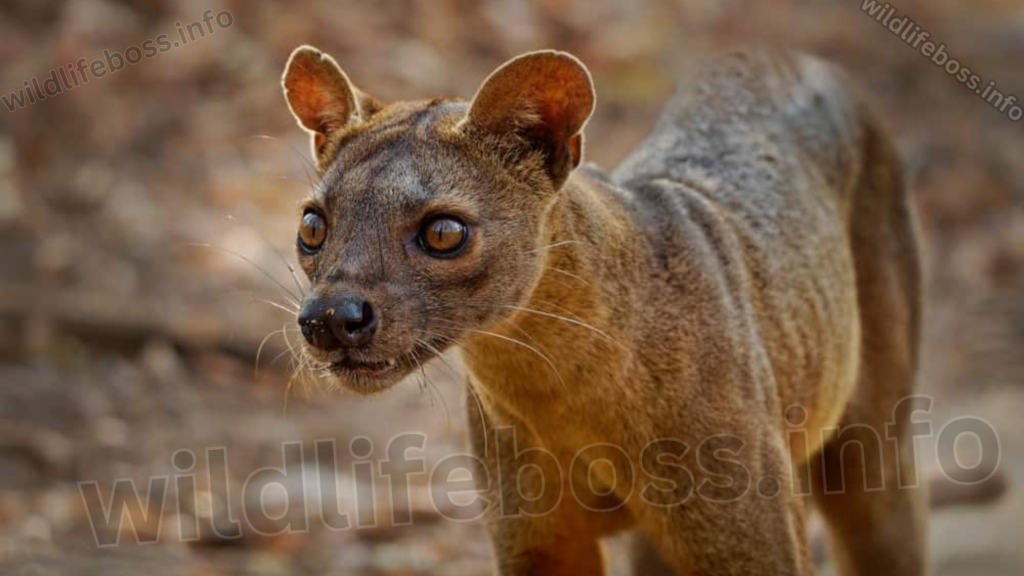
Scientific name: Cryptoprocta ferox
Quick summary: A carnivore whose closest relatives include meerkats, mongooses, and civets.
The fossa is a closely related animal to mongoose and meerkat. It is very large and resembles a cat than the meerkat in most ways, but does cute pointed face, cute little ears like the meerkat.
Fossas are found only in the Malagasy forests ; they reach up to 6ft in length, and a weight of 26 pounds. They have a slightly lighter underbelly and it’s fur is also shorter and more coarse than its relatives, which is usually a deep rich red-gold shade.
But as much as they mostly feed on lemurs, the birds also catch fish, lizard, mice and even wild pigs to feed on.
Fossas are now the largest carnivores on the large island of Madagascar. They commonly occupy the normal life duration of 15 years in the natural environment and only 20 years in the controlled natural environment.
12. African Civet
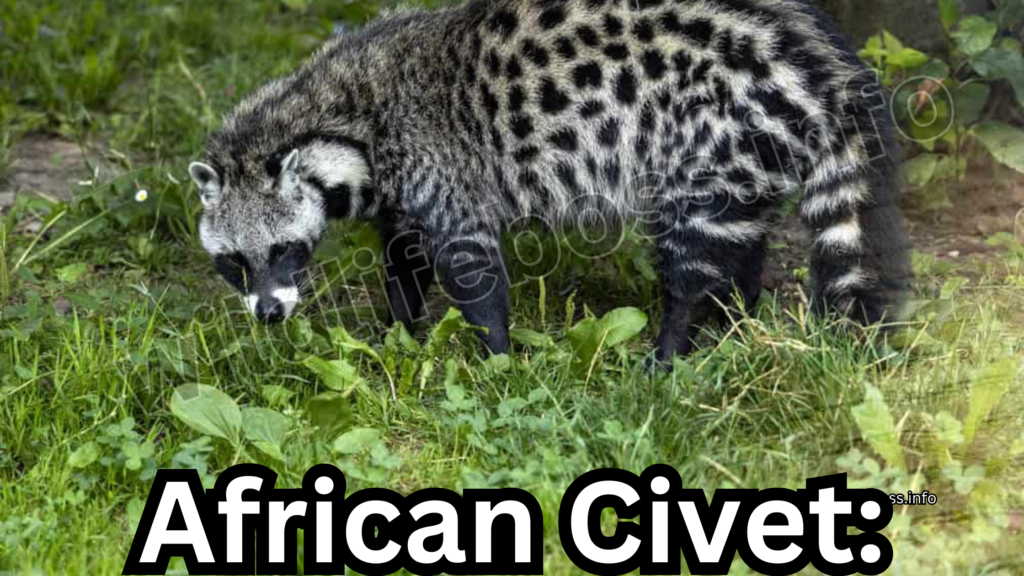
Scientific name: Civettictis civetta
Quick summary: Meerkat-like face traits on a small, thin mammal related to mongooses.
Smaller and more gracefully built than the civet, the African civet, is not, in fact, a member of the cat family, but is, in fact, more closely related to the mongoose. Like meerkats, they have small ears and pointed snouts.
Black spots in rows and black marks around the eyes are characteristic features of the short, thick, greyish fur of African civets.
African civets can weigh up to 44 pounds, have tails that can reach 13 to 19 inches in length, and are typically 26 to 33 inches long from head to body. In captivity they can live three to four years longer, but in the wild their average lifespan is 15 to 20 years.
The omnivorous diet of African civets includes fruit, insects, and plants. Young lambs, rats, and fowl are among the larger animals that civets can consume.
Conclusion:
The meerkat is the last surviving member of the Suricata genus. They have a close kinship with other members of the Herpestidae family, including mongooses. There are numerous traits that these two creatures have in common. Meerkats belonged to the ancient carnivore family Viverridae before being categorized under the Herpestidae family. This could account for some of their resemblances to other members of the Viverridae family.
The same environment is shared by some other animals that are very similar to meerkats. It is much more difficult to distinguish between them in the wild because some of them share their burrows with meerkats.

